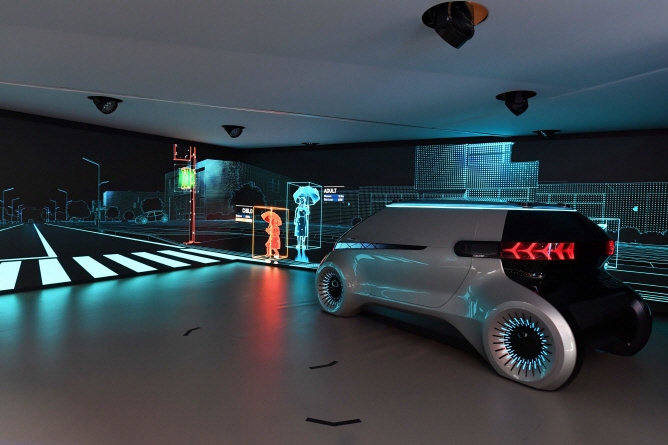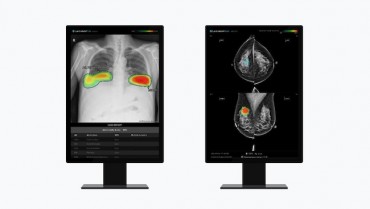
M.VISION, a vehicle concept mated with Level 4 autonomous driving technology. (image: Hyundai Mobis)
SEOUL, Jan. 9 (Korea Bizwire) – Hyundai Mobis Co., South Korea’s biggest auto parts maker, introduced a “Level 4″ full self-driving automation technology at the Consumer Electronics Show (CES) in Las Vegas, the company said Wednesday.
In a Level 4 car, there is no need for the driver to take control, as the vehicle is designed to perform all safety-critical driving functions and monitor road conditions, according to the U.S. National Highway Traffic Safety Administration (NHTSA).
At CES, the world’s biggest technology show, that kicked on Tuesday for a four day run, Hyundai Mobis applied the advanced technology to a vehicle concept ‘M.VISION’ equipped with the “autonomous driving kit” composed of four light detection and ranging (LiDAR) sensors and five multifunctional camera sensors, the company said in a statement.
Aided by five laser sensors and 12 ultrasound sensors attached to the bottom of M.VISION, the kit installed on the roof of the vehicle uses light energy, emitted from lasers, to scan the ground and measure variable distances, the statement said.
Hyundai Mobis said it aims to develop its own sensing technologies by 2020 through partnerships with other companies at home and abroad.
The company has been conducting a motorway test of Level 3 technology in the M.BILLY autonomous car since last year in South Korea, the U.S., and in Europe. Since Level 3 cars are only good for limited self-driving, the driver must be available to take control of the car if the need arises.
A Level 3 car, if fully developed, will allow lane changes and other autonomous driving functions to work without intervention by the driver.
Hyundai Mobis has developed Level 2 technology in which the driver can initiate a lane change on the highway, as well as exit and join highways, if he or she just turns on the indicator light. The company aims to start commercializing the Level 2 technology in 2019.
The Level 1 was intended to keep a vehicle in its lane and effectively help protect the driver from the often serious consequences resulting from lack of attention, distraction or a few seconds of micro-sleep.
Autonomous technologies, however, still suffer from shortcomings since they are designed for operation in non-urban, virtually intersection-free road conditions that do not have tight curves.
Hyundai Mobis expects Level 4 technology to be available after 2025 for operation in urban areas punctuated with intersections that require tight turns and frequent use of breaks.
(Yonhap)






